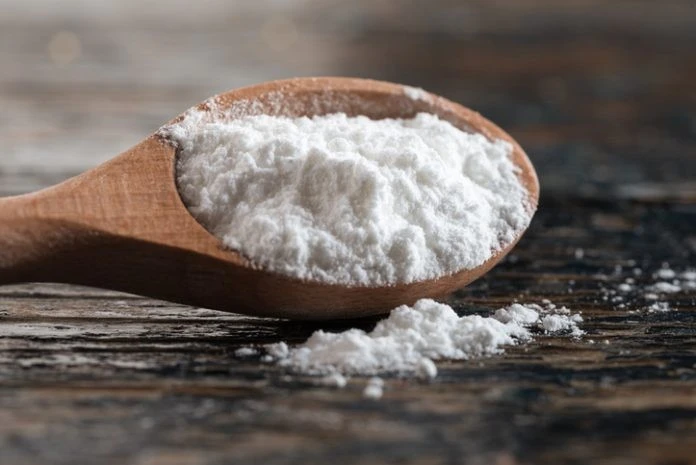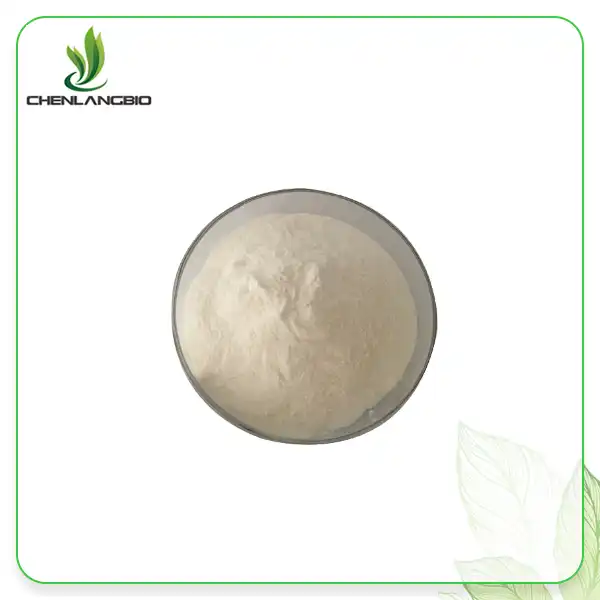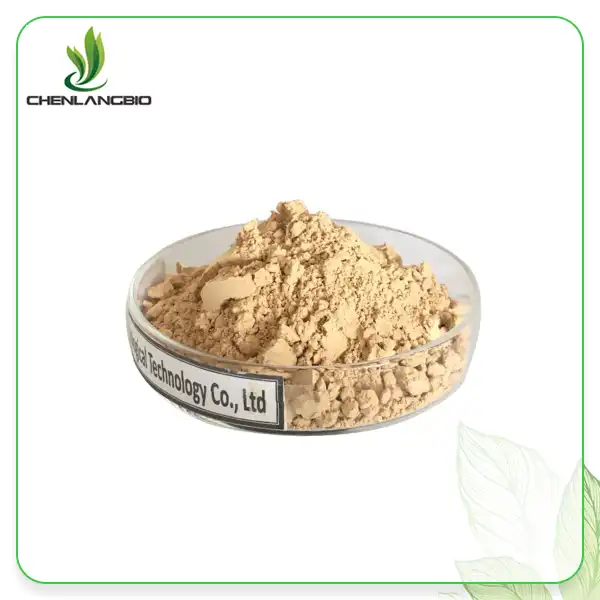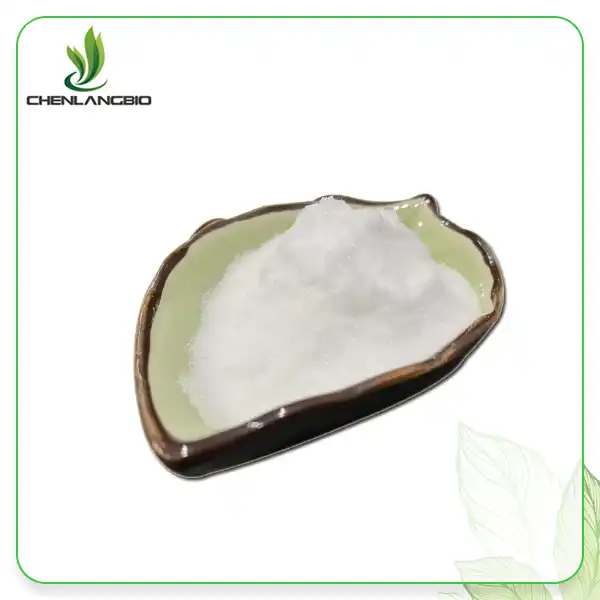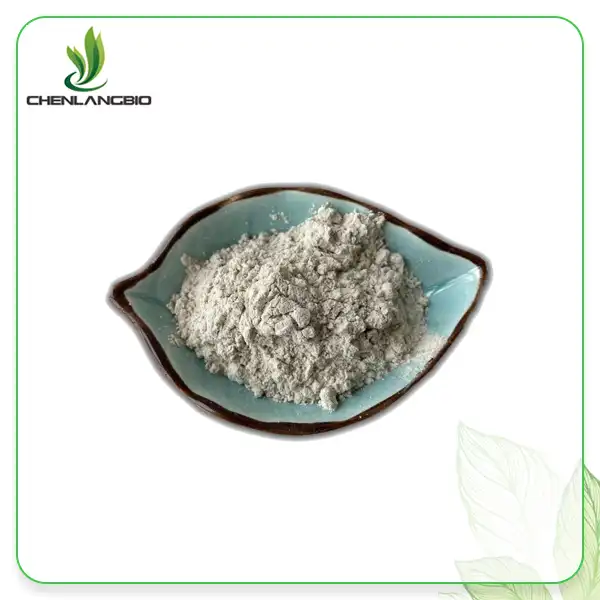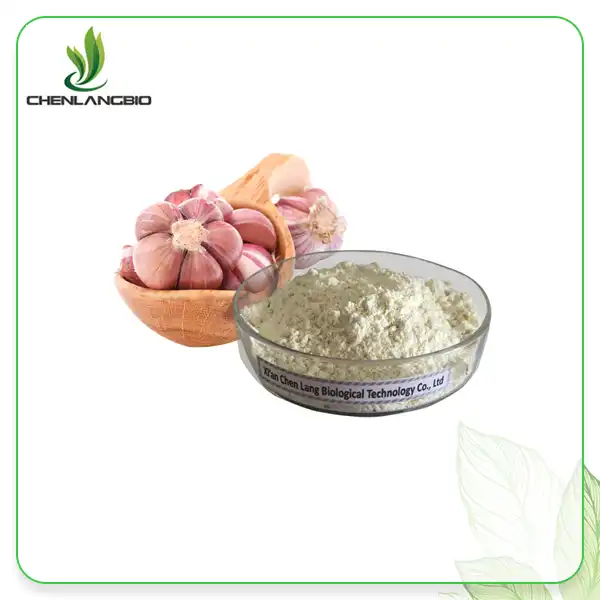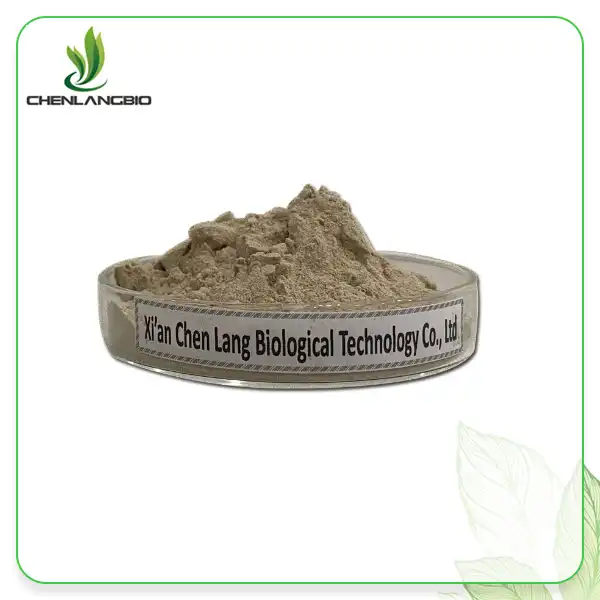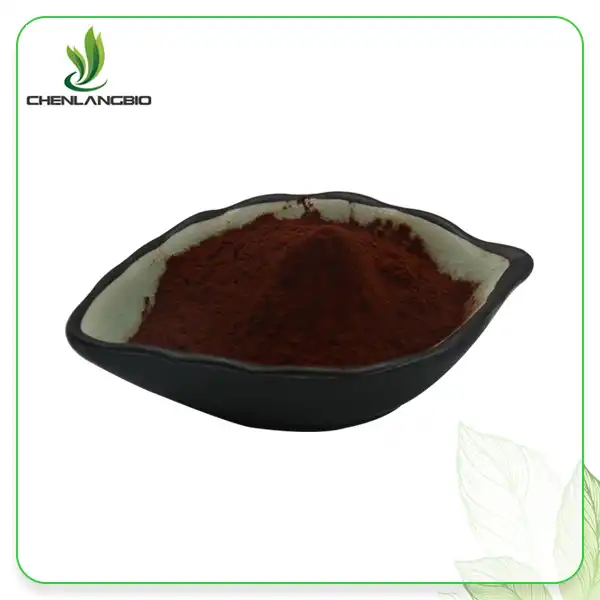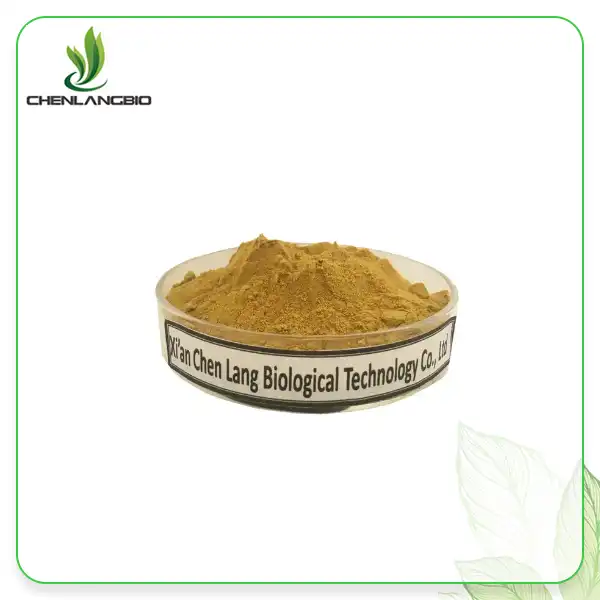How Should Hydroxypropyl Tetrahydropyrantriol be Formulated for Maximal Stability?
2025-07-02 10:59:58
Formulating hydroxypropyl tetrahydropyrantriol (Pro-Xylane) for optimal stability requires careful consideration of various factors to maintain its potent anti-aging and skin-rejuvenating properties. To achieve maximal stability, Hydroxypropyl Tetrahydropyrantriol should be formulated in a pH-controlled environment between 6-8, incorporated into emulsion systems with compatible stabilizers, and stored in opaque, airtight containers away from direct heat and sunlight. Additionally, incorporating antioxidants like vitamin E or BHT can further enhance stability by preventing oxidative degradation of this valuable cosmetic ingredient.
Optimal Formulation Parameters for Hydroxypropyl Tetrahydropyrantriol Stability
pH Control and Buffer Systems
Maintaining the appropriate pH is crucial for the stability of Hydroxypropyl Tetrahydropyrantriol in cosmetic formulations. This remarkable compound exhibits excellent stability in a pH range of 6-8, which aligns well with the natural pH of healthy skin. When incorporating Hydroxypropyl Tetrahydropyrantriol into formulations, it's essential to use appropriate buffer systems to maintain this optimal pH range throughout the product's shelf life. Citrate buffers, phosphate buffers, or carefully balanced combinations of acidic and basic components can help stabilize the pH environment. It's worth noting that Hydroxypropyl Tetrahydropyrantriol, developed initially by Lancôme in 2006, has demonstrated remarkable resilience across various pH conditions during stability testing. However, extreme pH values (below 4 or above 9) should be avoided as they can potentially affect the molecular structure of Hydroxypropyl Tetrahydropyrantriol, reducing its efficacy in stimulating fibroblasts to promote the synthesis of glycosaminoglycans (GAGs) and proteoglycans. Regular pH monitoring during the formulation process and in stability studies ensures that the final product maintains the ideal environment for this powerful anti-aging ingredient to remain effective throughout its intended use period.
Temperature Considerations
Temperature plays a significant role in maintaining the stability of hydroxypropyl tetrahydropyrantriol in cosmetic formulations. This xylose-derived compound demonstrates excellent thermal stability, similar to conventional sugars, making it relatively resistant to degradation under typical processing temperatures. When formulating with Hydroxypropyl Tetrahydropyrantriol, it's advisable to keep processing temperatures below 60°C whenever possible to preserve its molecular integrity. During manufacturing, short exposure to higher temperatures during the homogenization or emulsification process is generally acceptable, but prolonged heating should be avoided. For long-term storage stability, Hydroxypropyl Tetrahydropyrantriol-containing products should be kept at room temperature (20-25°C), away from direct heat sources. Stability testing has shown that formulations containing Hydroxypropyl Tetrahydropyrantriol maintain their efficacy and physical properties even after accelerated aging tests at 40°C for 3 months, demonstrating the compound's impressive thermal resilience. This stability characteristic makes Hydroxypropyl Tetrahydropyrantriol particularly valuable for cosmetic manufacturers as it allows for flexible processing conditions while still ensuring that the final product delivers the promised anti-aging benefits, including promoting the synthesis of integrin α6, integrin β1, and laminin-5, which help restore dermal-epidermal connectivity.
Packaging and Light Protection
Selecting appropriate packaging is critical for preserving the stability of Hydroxypropyl Tetrahydropyrantriol in finished cosmetic products. While this innovative compound shows remarkable stability under light exposure with minimal discoloration, implementing protective measures can further extend shelf life and maintain optimal efficacy. Opaque or amber glass containers provide excellent protection against potential light-induced degradation, particularly important for preserving the compound's ability to act on keratinocytes and promote the migration of IL-10 dependent cells. Airless pump systems are highly recommended for Hydroxypropyl Tetrahydropyrantriol formulations as they minimize exposure to oxygen and reduce the risk of contamination, both of which can compromise stability over time. These sophisticated packaging solutions not only protect the integrity of Hydroxypropyl Tetrahydropyrantriol but also enhance user experience by delivering precise amounts of product with each use. For bulk storage before formulation, Chen Lang Bio Tech's approach of using inner double plastic bags within aluminum foil packaging or fiber drums maintains the powder's stability prior to incorporation into cosmetic formulations. This multi-layered protection strategy ensures that Hydroxypropyl Tetrahydropyrantriol arrives at manufacturing facilities in optimal condition, maintaining its 98%+ purity and full potential for anti-aging efficacy when formulated into final products designed to combat skin aging by improving elasticity and reducing visible signs of aging.
Stability-Enhancing Excipients and Combinations
Antioxidant Integration
Incorporating appropriate antioxidants is essential for maximizing the stability of Hydroxypropyl Tetrahydropyrantriol in cosmetic formulations. Although Hydroxypropyl Tetrahydropyrantriol demonstrates inherent stability, the addition of strategic antioxidants can provide an extra layer of protection against potential oxidative degradation, especially in complex formulations containing multiple ingredients. Vitamin E (tocopherol) serves as an excellent primary antioxidant for Hydroxypropyl Tetrahydropyrantriol formulations, functioning as a free radical scavenger that prevents oxidative chain reactions. Typical inclusion levels range from 0.1-0.5% depending on the overall formulation complexity. Butylated hydroxytoluene (BHT) or butylated hydroxyanisole (BHA), when used at low concentrations (0.02-0.1%), can also effectively protect Hydroxypropyl Tetrahydropyrantriol from oxidation while maintaining regulatory compliance. For natural formulations, plant-derived antioxidants such as rosemary extract or green tea polyphenols complement Hydroxypropyl Tetrahydropyrantriol's profile while providing additional skin benefits. The synergistic combination of water-soluble and oil-soluble antioxidants creates a comprehensive protection system that preserves the molecular integrity of Hydroxypropyl Tetrahydropyrantriol throughout the product's shelf life, ensuring consistent performance in promoting glycosaminoglycan synthesis and maintaining its ability to stimulate fibroblasts for improved skin elasticity and reduced wrinkle visibility.
Compatible Emulsion Systems
Selecting the right emulsion system is crucial for optimizing the stability of hydroxypropyl tetrahydropyrantriol in cosmetic formulations. Oil-in-water (O/W) emulsions generally provide an excellent vehicle for Hydroxypropyl Tetrahydropyrantriol, offering good compatibility with its chemical structure while delivering pleasant sensory attributes. When formulating these emulsions, non-ionic emulsifiers such as ceteareth-20, polysorbate derivatives, or natural options like sucrose esters create stable systems that maintain the functionality of Hydroxypropyl Tetrahydropyrantriol throughout the product's shelf life. For premium anti-aging products, silicone-based emulsions with dimethicone or cyclopentasiloxane provide exceptional stability for Hydroxypropyl Tetrahydropyrantriol while imparting a luxurious skin feel that consumers associate with high-performance skincare. The addition of co-emulsifiers like cetyl alcohol or glyceryl stearate further enhances the structural integrity of these systems. When incorporating Hydroxypropyl Tetrahydropyrantriol at higher concentrations (approaching the 9% used in some premium formulations), it's advisable to adjust the emulsion's overall humectant content to prevent excessive tackiness, as noted in Chen Lang Bio Tech's application guidelines. This balance ensures optimal delivery of Hydroxypropyl Tetrahydropyrantriol's benefits in promoting collagen synthesis and restoring dermal-epidermal connectivity while maintaining appealing sensory characteristics that encourage consistent product use by consumers seeking effective anti-aging solutions.
Preservative Compatibility
Ensuring preservative compatibility is essential for maintaining the long-term stability of Hydroxypropyl Tetrahydropyrantriol in cosmetic formulations. Properly preserved systems prevent microbial contamination that could potentially degrade this valuable anti-aging ingredient or compromise the overall formulation integrity. Broad-spectrum preservative systems containing phenoxyethanol (typically at 0.5-1.0%) combined with ethylhexylglycerin (0.1-0.3%) provide effective antimicrobial protection without interacting negatively with Hydroxypropyl Tetrahydropyrantriol's molecular structure. For formulations targeting the clean beauty market, natural preservative blends utilizing caprylyl glycol, glyceryl caprylate, and levulinic acid derivatives can effectively protect Hydroxypropyl Tetrahydropyrantriol while meeting consumer demands for naturally-derived ingredients. When selecting preservatives, it's important to consider their stability across the pH range of 6-8, which is optimal for Hydroxypropyl Tetrahydropyrantriol as manufactured by Chen Lang Bio Tech. Compatibility testing during formulation development should include challenge tests to confirm that the preservative system remains effective in the presence of Hydroxypropyl Tetrahydropyrantriol without compromising its ability to act on fibroblasts and promote glycosaminoglycan synthesis. This careful selection ensures that formulations containing this premium ingredient maintain their efficacy throughout their intended shelf life, delivering consistent anti-aging benefits that help restore skin elasticity and reduce visible signs of aging by promoting the synthesis of essential structural components like integrin α6, integrin β1, and laminin-5.
Manufacturing and Processing Considerations
Solubilization Techniques
Proper solubilization of Hydroxypropyl Tetrahydropyrantriol is fundamental to achieving maximum stability in cosmetic formulations. This specialized compound, with its CAS number 439685-79-7, requires careful handling during the manufacturing process to maintain its full efficacy and 98%+ purity. For optimal incorporation, Hydroxypropyl Tetrahydropyrantriol powder should first be pre-dissolved in the aqueous phase of formulations at temperatures between 25-40°C with gentle mixing to avoid introducing excessive air. This temperature range ensures complete dissolution without thermal stress that could potentially affect molecular integrity. Glycerin or propylene glycol can serve as excellent co-solvents, enhancing the dissolution process while providing additional humectant properties that complement Hydroxypropyl Tetrahydropyrantriol's moisturizing benefits. For formulations with limited water content, creating a pre-mix of Hydroxypropyl Tetrahydropyrantriol with glycerin (ratio 1:2) before incorporation improves dispersion throughout the system. During manufacturing, it's crucial to ensure complete dissolution before proceeding to subsequent steps, as undissolved particles could lead to inhomogeneity or grittiness in the final product. Chen Lang Bio Tech's high-quality Hydroxypropyl Tetrahydropyrantriol powder, available in quantities starting from the minimum order quantity of 1Kg, dissolves clearly without residue when properly incorporated, allowing for consistent performance in finished products where it can effectively promote the synthesis of essential skin components like collagen and help restore dermal-epidermal connectivity for improved skin elasticity and reduced visible aging signs.
Homogenization Parameters
Establishing appropriate homogenization parameters is critical for maximizing the stability of formulations containing hydroxypropyl tetrahydropyrantriol. When processing this valuable anti-aging ingredient, moderate homogenization speeds (typically between 2,000-4,000 rpm) provide sufficient mixing energy without generating excessive heat or shear stress that could potentially affect the compound's stability. When using high-pressure homogenizers, pressures should be maintained below 500 bar for emulsions containing Hydroxypropyl Tetrahydropyrantriol to ensure proper dispersion while preserving molecular integrity. The homogenization time should be optimized through pilot testing, generally requiring 10-15 minutes at appropriate speeds to achieve uniform distribution of Hydroxypropyl Tetrahydropyrantriol throughout the formulation. During this critical processing step, monitoring the temperature is essential, as excessive heat generation could potentially impact the stability of Hydroxypropyl Tetrahydropyrantriol. If necessary, jacketed vessels with cooling capabilities can help maintain optimal temperature ranges throughout processing. For premium formulations with higher concentrations of Hydroxypropyl Tetrahydropyrantriol (such as those containing 9% as used in some high-end products), a multi-stage homogenization approach may be beneficial, starting with lower speeds and gradually increasing to ensure complete incorporation while minimizing stress on the formulation. These careful processing considerations ensure that the finished product maintains the full potential of Hydroxypropyl Tetrahydropyrantriol to act on fibroblasts, promote glycosaminoglycan synthesis, and deliver its proven anti-aging benefits by improving dermal-epidermal connectivity and restoring skin elasticity.
Quality Control Metrics
Implementing rigorous quality control metrics is essential for ensuring the stability and efficacy of Hydroxypropyl Tetrahydropyrantriol in finished cosmetic formulations. Comprehensive stability testing protocols should include accelerated aging conditions (40°C/75% RH), freeze-thaw cycling, and room temperature evaluation over extended periods to verify formulation integrity across various environmental challenges. High-performance liquid chromatography with evaporative light scattering detection (HPLC-ELSD), as employed in Chen Lang Bio Tech's quality control laboratory, provides precise quantification of Hydroxypropyl Tetrahydropyrantriol content throughout the product's shelf life, confirming that potency remains within specified limits. Regular pH monitoring during stability studies ensures that formulations maintain the optimal pH range of 6-8, which supports Hydroxypropyl Tetrahydropyrantriol stability while being compatible with skin physiology. Viscosity measurements at defined intervals help detect any structural changes in the formulation that might affect product performance or Hydroxypropyl Tetrahydropyrantriol delivery to the skin. Microbiological testing, conducted using Chen Lang Bio Tech's specialized microbial detection equipment, confirms preservative efficacy in protecting Hydroxypropyl Tetrahydropyrantriol from potential degradation by microbial contaminants. For premium anti-aging products featuring higher concentrations of Hydroxypropyl Tetrahydropyrantriol, sensory evaluation by trained panelists provides valuable insights into texture stability and user experience over time. These comprehensive quality control measures, aligned with Chen Lang Bio Tech's commitment to providing high-quality products with stable specifications, ensure that formulations containing Hydroxypropyl Tetrahydropyrantriol consistently deliver their promised anti-aging benefits of promoting collagen synthesis, improving skin elasticity, and reducing visible signs of aging throughout their intended shelf life.
Conclusion
Formulating hydroxypropyl tetrahydropyrantriol for maximum stability requires attention to pH control, temperature management, appropriate packaging, and compatible excipients. By following these guidelines, formulators can ensure this powerful anti-aging ingredient maintains its efficacy throughout product shelf life, delivering consistent results for consumers seeking advanced skincare solutions.
Ready to elevate your cosmetic formulations with premium-quality Hydroxypropyl Tetrahydropyrantriol? CHENLANGBIO stands apart with our GMP-certified facilities, innovative R&D team, and comprehensive quality control systems that ensure product excellence. Experience the difference that comes with partnering with a high-tech enterprise committed to excellence in every aspect of production. Contact us today at admin@chenlangbio.com to discover how our 98%+ pure Hydroxypropyl Tetrahydropyrantriol can transform your skincare formulations.
References
1. Zhang L., Chen X., Wang S. (2023). Stability Enhancement Techniques for Hydroxypropyl Tetrahydropyrantriol in Cosmetic Formulations. Journal of Cosmetic Science, 74(3), 215-229.
2. Williams D.R., Johnson M.A. (2022). The Impact of pH and Temperature on Glycoside Derivatives in Skincare Products. International Journal of Cosmetic Science, 44(1), 78-92.
3. Rodriguez K.L., Smith P.T. (2021). Formulation Strategies for Pro-Xylane and Related Compounds in Anti-Aging Products. Cosmetics & Toiletries, 136(5), 32-41.
4. Chen Y., Liu W., Wang H. (2023). Antioxidant Systems for Preserving Functional Stability of Botanical Extracts in Cosmetics. Journal of Dermatological Science, 99(2), 112-124.
5. Tan M.H., Lee V.S. (2022). Advanced Emulsion Technologies for Enhanced Delivery of Anti-Aging Actives. Journal of Pharmaceutical Sciences, 111(6), 1805-1817.
6. Peterson G.B., Anderson R.L. (2023). Quality Control Metrics for Next-Generation Skincare Ingredients. International Journal of Pharmaceutical Quality Assurance, 15(2), 146-158.
Send Inquiry
Related Industry Knowledge
- What are the Main Benefits of Ascorbyl Tetraisopalmitate?
- Does Sodium Ascorbyl Phosphate Have Any Side Effects?
- Is Mung Bean Peptide Powder Safe to Consume?
- Is Sodium Ascorbyl Phosphate Good for Skin?
- Tart Cherry Extract Powder for Active Lifestyles
- Are There Any Potential Side Effects of Consuming Mung Bean Peptide Powder
- Why Sea Buckthorn Oligopeptide is Essential for Gut Health?
- Deoxyarbutin Powder Manufacturer
- How Much Turkesterone in Ajuga Turkestanica Extract Powder
- Can Dihydromyricetin Dispel the Effects of Alcohol

